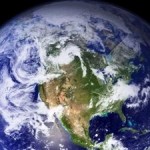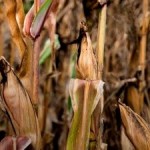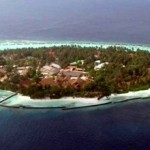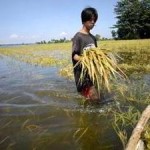Up to 97 per cent of the 5,000 plant species studied could undergo range size reductions or shifts, while up to 40 per cent could experience total range elimination by 2085 in a ‘2°C World’ scenario. At the same time, a ‘3.5-4°C’ scenario projects fish declines in freshwater lakes across places such as Chilwa, Kariba, Malawi, Tanganyika and Victoria, which would jeopardize the source of more than 60 per cent of the protein needs of the surrounding communities.
Perhaps the most drastic example of the effects of climate change in Africa is that coral reefs – which are essential support systems for marine fisheries, tourism, and coastal protection against sea level rise and storm surges – are projected to be entirely extinct before we even enter a ‘4°C World’.
Adaptation Funding: Opportunities and Challenges
How well Africa deals with these climate impacts, now and in the future, will be co-determined by the funding it receives.
Adaptation measures such as early warning systems and coastal zone management to counter sea level rise offer a possibility of minimizing these impacts, but Africa’s capacity to adapt depends critically on access to funding.
Traceable funding disbursed in Africa for climate change adaptation through bilateral and multilateral channels for the years 2010 and 2011 amounted to USD $ 743 and $ 454 million, respectively, although this figure does not fully account for the funding channeled through Development Finance Institutions, for example, the World Bank, or national development banks.
To meet the adaptation costs estimated in the report for Africa by the 2020s, funds disbursed annually would need to grow at an average rate of 10-20 per cent a year from 2011 to the 2020s. There is currently no clear, agreed pathway to provide these resources.
The UN Framework Convention on Climate Change’s developed country Parties have committed to provide funds rising to USD $ 100 billion annually by 2020 through the “Green Climate Fund” – established by the 2010 Cancun Agreements – from public and private sources, for both adaptation and mitigation actions in across all developing countries by 2020.
However, rules drawing up the allocation of funding for adaptation have yet to be defined and await negotiation. At this stage, there is no clear sense of how much of these funds would benefit countries in the African region, nor of the likely allocation between adaptation and mitigation funding.
Until these issues are resolved it is not possible to assign a share of the USD $ 100 billion annual commitment by 2020 to Africa.
Assuming funding for adaptation efforts in Africa reached adequate levels by 2020 and assuming the world gets on track to limit warming to below 2°C, annual funding for adaptation efforts in Africa still needs to rise a further 7 per cent a year from the 2020s onwards to keep pace with continuing sea level rise and warming peaking below 2°C after the 2050s.
This is considerably less than the funding challenge if the current mitigation efforts were not increased, and warming reached 3.5-4°C by 2100. In this case, the scaling up of annual funds would need to be 10 per cent every year after the 2020s.
Challenged Capacity
In all scenarios, the capacity of African communities to cope with the effects of climate change on different economic sectors and human activities is expected to be significantly challenged, and potentially overwhelmed, by the magnitude and rapid onset of climate change impacts.
To reduce the magnitude of the impacts and their repercussions for African livelihoods, adaptation measures at different levels, from households to national and regional levels, are being planned and implemented and need to be further supported and strengthened.
These measures include:
- The development of early-warning systems for floods, droughts or fires to help populations anticipate and prepare for the occurrence of extreme weather events;
- Irrigation, improvement in water storage capacity, reforestation to protect surface water systems, sustainable use of groundwater resources, desalinization of seawater, and rainwater catchments and storage to maintain sufficient and reliable access to freshwater for human and agricultural needs;
- City infrastructure protection measures such as sea-walls, dykes, wave-breakers and other elements of coastal zone management, as well as city-level food storage capacity and urban agriculture to enhance food security;
- Improving design and drainage technology of sanitation facilities to reduce the risk of water-borne diseases in the aftermath of extreme weather events.
The majority of these and other adaptation measures require an anticipatory and planned approach, as well as large investments. The need for planned capital-intensive adaptation is greater at high than low warming levels.
Check the following link to read/download Africa’s Adaptation Gap Report:
http://unep.org/pdf/AfricaAdapatationGapreport.pdf
Source: UNEP.








